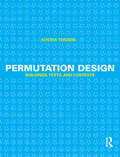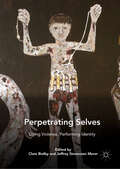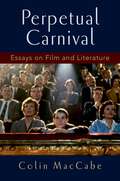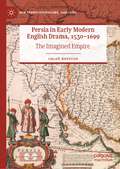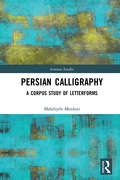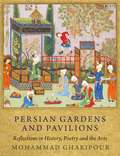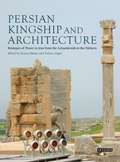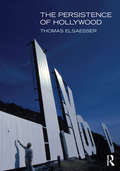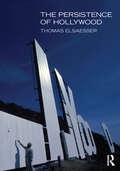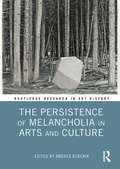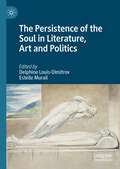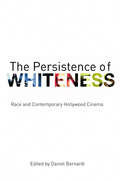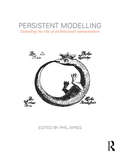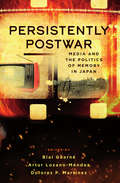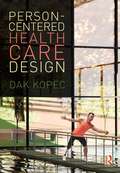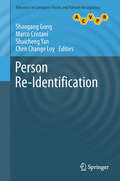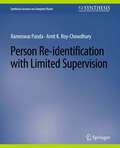- Table View
- List View
Permutation Design: Buildings, Texts, and Contexts
by Kostas TerzidisIn design, the problems that designers are called upon to solve can be regarded as a problem of permutations. A permutation is an ordered arrangement of elements in a set. In our case, the set is design and the elements are design components, such as lines, shapes, forms, or spaces. Traditionally, such arrangements are done by human designers who base their decision-making process either on intuition or on random sampling until a valid solution is found. However, in both cases the solution found may be an acceptable one but cannot be labeled as "the best possible solution" due to the subjective or arbitrary nature of the selection process. In contrast, by harnessing the potential of computational design, these elements can be arranged in all possible ways and then the best ones are chosen based on specific criteria. By presenting a complete list of permutation-based arrangements the "best solution" will eventually reveal itself by excluding all other possible solutions. This book comprehensively addresses theories, techniques, and examples of permutation design in order to fully demonstrate to the reader the full range of possibilities this method represents. The significance of such an approach to design is enormous, paradigmatic, and far-reaching. It provides an alternative method for design analysis, synthesis, and evaluation that is based on computational force rather than pure human intelligence alone. In contrast to human-based random sampling or intuition, permutation-based design offers the assurance of an optimum design since any possible alternative design can be eliminated. From a practical point of view, this methodology offers a paradigmatic shift away from the current state of design practice where arbitrariness, repetition, and redundancy often exist. From a theoretical viewpoint, this new paradigm will offer alternative insights into the value of human creativity, intuition, and intelligence.
Perpetrating Selves: Doing Violence, Performing Identity
by Clare Bielby Jeffrey Stevenson MurerThis volume explores violent perpetration in diverse forms from an interdisciplinary and transnational perspective. From National Socialist perpetration in the museum, through post-terrorist life writing to embodied performances of perpetration in cosplay, the collection draws upon a series of historical and geographical case studies, seen through the lens of a variety of texts, with a particular focus on the locus of the museum as a technology of sense making. In addition to its authored chapters, the volume includes three contributed interviews which offer a practice-led perspective on the topic. Through its wide-ranging approach to violence, the volume draws attention to the contested and gendered nature of what is constructed as ‘perpetration’. With a focus on perpetrator subjectivity or the ‘perpetrator self’, it proposes that we approach perpetration as a form of ‘doing’; and a ‘doing’ that is bound up with the ‘doing’ of one’s gendered identity more broadly. The work will be of great interest to students and scholars working on violence and perpetration in the fields of History, Literary Studies, Area Studies, Women’s and Gender Studies, Museum Studies, Cultural Studies, International Relations and Political Science.
Perpetual Carnival: Essays on Film and Literature
by Colin MacCabeUpholding literature and film together as academically interwoven, Perpetual Carnival underscores the everlasting coexistence of realism and modernism, eschewing the popularly accepted view that the latter is itself a rejection of the former. Mining examples from both film and literature, Colin MacCabe asserts that the relationship between film and literature springs to life a wealth of beloved modernist art, from Jean-Luc Godard's Pierre le Fou to James Joyce's Ulysses, enriched by realism's enduring legacy. The intertextuality inherent in adaptation furthers this assertion in MacCabe's inclusion of Roman Polanski's Tess, a 1979 adaptation of Thomas Hardy's nineteenth-century realist novel, Tess of the d'Urbervilles. Showcasing essays enlivened by cosmopolitan interests, theoretical insight, and strong social purpose, Perpetual Carnival supports a humanities which repudiates narrow specialization and which seeks to place the discussion of film and literature firmly in the reality of current political and ideological discussion. It argues for the writers and directors, the thinkers and critics, who have most fired the contemporary imagination.
Perpetual Carnival: Essays on Film and Literature
by Colin MacCabeUpholding literature and film together as academically interwoven, Perpetual Carnival underscores the everlasting coexistence of realism and modernism, eschewing the popularly accepted view that the latter is itself a rejection of the former. Mining examples from both film and literature, Colin MacCabe asserts that the relationship between film and literature springs to life a wealth of beloved modernist art, from Jean-Luc Godard's Pierre le Fou to James Joyce's Ulysses, enriched by realism's enduring legacy. The intertextuality inherent in adaptation furthers this assertion in MacCabe's inclusion of Roman Polanski's Tess, a 1979 adaptation of Thomas Hardy's nineteenth-century realist novel, Tess of the d'Urbervilles. Showcasing essays enlivened by cosmopolitan interests, theoretical insight, and strong social purpose, Perpetual Carnival supports a humanities which repudiates narrow specialization and which seeks to place the discussion of film and literature firmly in the reality of current political and ideological discussion. It argues for the writers and directors, the thinkers and critics, who have most fired the contemporary imagination.
Persia in Early Modern English Drama, 1530–1699: The Imagined Empire (New Transculturalisms, 1400–1800)
by Chloë HoustonThis book is a study of the representation of the Persian empire in English drama across the early modern period, from the 1530s to the 1690s. The wide focus of this book, encompassing thirteen dramatic entertainments, both canonical and little-known, allow it to trace the changes and developments in the dramatic use of Persia and its people across one and a half centuries. It explores what Persia signified to English playwrights and audiences in this period; the ideas and associations conjured up by mention of ‘Persia’; and where information about Persia came from. It also considers how ideas about Persia changed with the development of global travel and trade, as English people came into people with Persians for the first time. In addressing these issues, this book provides an examination not only of the representation of Persia in dramatic material, but of the broader relationship between travel, politics and the theatre in early modern England.
Persian Calligraphy: A Corpus Study of Letterforms (Iranian Studies)
by Mahdiyeh MeidaniThis book is an exploratory adventure to defamiliarize calligraphy, especially Persian Nastaliq calligraphic letterforms, and to look beyond the tradition that has always considered calligraphy as pursuant to and subordinate to linguistic practices. Calligraphy can be considered a visual communicative system with different means of meaning-making or as a medium through which meaning is made and expression is conveyed via a complex grammar. This study looks at calligraphy as a systematic means in the field of visual communication, rather than as a one-dimensional and ad hoc means of providing visual beauty and aesthetic enjoyment. Revolving around different insights of multimodal social semiotics, the volume relies on the findings of a corpus study of Persian Nastaliq calligraphy. The research emphasizes the way in which letterforms, regardless of conventions in language, are applied as graphically meaningful forms that convey individual distinct meanings. This volume on Persian Nastaliq calligraphy will be inspirational to visual artists, designers, calligraphers, writers, linguists, and visual communicators. With an introduction to social semiotics, this work will be of interest to students and scholars interested in visual arts, media and communication, and semiotics.
Persian Calligraphy: A Corpus Study of Letterforms (Iranian Studies)
by Mahdiyeh MeidaniThis book is an exploratory adventure to defamiliarize calligraphy, especially Persian Nastaliq calligraphic letterforms, and to look beyond the tradition that has always considered calligraphy as pursuant to and subordinate to linguistic practices. Calligraphy can be considered a visual communicative system with different means of meaning-making or as a medium through which meaning is made and expression is conveyed via a complex grammar. This study looks at calligraphy as a systematic means in the field of visual communication, rather than as a one-dimensional and ad hoc means of providing visual beauty and aesthetic enjoyment. Revolving around different insights of multimodal social semiotics, the volume relies on the findings of a corpus study of Persian Nastaliq calligraphy. The research emphasizes the way in which letterforms, regardless of conventions in language, are applied as graphically meaningful forms that convey individual distinct meanings. This volume on Persian Nastaliq calligraphy will be inspirational to visual artists, designers, calligraphers, writers, linguists, and visual communicators. With an introduction to social semiotics, this work will be of interest to students and scholars interested in visual arts, media and communication, and semiotics.
Persian Gardens and Pavilions: Reflections in History, Poetry and the Arts (International Library of Iranian Studies)
by Mohammad GharipourFrom Timur's tent in Samarqand to Shah 'Abbas's palace in Isfahan and Humayun's tomb in Delhi, the pavilion has been an integral part of Persianate gardens since its earliest appearance at the Achaemenid garden in Pasargadae in the sixth century BC. Here, Mohammad Gharipour places both the garden and the pavilion within their historical, literary and artistic contexts, emphasizing the importance of the pavilion, which has hitherto been overlooked in the study of Iranian historical architecture. Starting with an examination of the depictions and representations of gardens in religious texts, Gharipour analyses the how the idea of the garden developed from the model of pre-Islamic gardens in Achaemenid and Sassanian Persia to its mentions in the Zoroastrian text of Aban Yasht and on to its central role as paradise in the Qur'an. Continuing on with an exploration of gardens and pavilions in Persian poetry, Gharipour offers in-depth analysis of their literal and metaphorical values. It is in the poetry of major Persian poets such as Ferdowsi, Naser Khosrow, Sa'di, Rumi and Hafez that Gharipour finds that whilst gardens are praised for their spiritual values, they also contain significant symbolic worth in terms of temporal wealth and power. Persian Gardens and Pavilions then goes onto examine the garden and the pavilion as reflected in Persian miniature painting, sculpture and carpets, as well as accounts of travelers to Persia. With masters such as Bizhad representing daily life as well as the more mystical prose and poetry in, for example, Sa'di's Bustan (The Orchard) and Golestan (The Rose Garden), the garden and the pavilion can be seen to have crucial semiotic significances and cultural meanings. But in addition to this, they also point to historical patterns of patronage and ownership which were of central importance in the diplomatic and social life of the royal courts of Persia. Gharipour thereby highlights the metaphorical, spiritual, symbolic and religious aspects of gardens, as well as their more materialistic and economic functions. This book reaches back through Persia's rich history to explore the material and psychological relationships between human beings, pavilions and gardens, and will be a valuable resource for Art History, Architecture and Iranian Studies.
Persian Kingship and Architecture: Strategies of Power in Iran from the Achaemenids to the Pahlavis (International Library of Iranian Studies)
by Talinn Grigor Sussan BabaieSince the Shah went into exile and the Islamic Republic was established in 1979 in the wake of the Iranian Revolution, the very idea of monarchy in Iran has been contentious. Yet, as Persian Kingship and Architecture argues, the institution of kingship has historically played a pivotal role in articulating the abstract notion of 'Iran' since antiquity. These ideas surrounding kingship and nation have, in turn, served as a unifying cultural force despite shifting political and religious allegiances. Through analyses of palaces, mausolea, art, architectural decoration and urban design the authors show how architecture was appropriated by different rulers as an integral part of their strategies of legitimising power. They refer to a variety of examples, from the monuments of Persepolis under the Achaemenids, the Sassanian palaces at Kish, the Safavid public square of Isfahan, the Qajar palaces at Shiraz and to the modernisation and urban agendas of the Pahlavis. Drawing on archaeology, ancient, medieval, early modern and modern architectural history, both Islamic and secular, this book is indispensable for all those interested in Iranian studies and visual culture.
The Persistence of Hollywood
by Thomas ElsaesserWhile Hollywood’s success – its persistence – has remained constant for almost one hundred years, the study of its success has undergone significant expansion and transformation. Since the 1960s, Thomas Elsaesser’s research has spearheaded the study of Hollywood, beginning with his classic essays on auteurism and cinephilia, focused around a director’s themes and style, up to his analysis of the "corporate authorship" of contemporary director James Cameron. In between, he has helped to transform film studies by incorporating questions of narrative, genre, desire, ideology and, more recently, Hollywood’s economic-technological infrastructure and its place within global capitalism. The Persistence of Hollywood brings together Elsaesser’s key writings about Hollywood filmmaking. It includes his detailed studies of individual directors (including Minnelli, Fuller, Ray, Hitchcock, Lang, Altman, Kubrick, Coppola, and Cameron), as well as essays charting the shifts from classic to corporate Hollywood by way of the New Hollywood and the resurgence of the blockbuster. The book also presents a history of the different critical-theoretical paradigms central to film studies in its analysis of Hollywood, from auteurism and cinephilia to textual analysis, Marxism, psychoanalysis, and post-industrial analysis.
The Persistence of Hollywood
by Thomas ElsaesserWhile Hollywood’s success – its persistence – has remained constant for almost one hundred years, the study of its success has undergone significant expansion and transformation. Since the 1960s, Thomas Elsaesser’s research has spearheaded the study of Hollywood, beginning with his classic essays on auteurism and cinephilia, focused around a director’s themes and style, up to his analysis of the "corporate authorship" of contemporary director James Cameron. In between, he has helped to transform film studies by incorporating questions of narrative, genre, desire, ideology and, more recently, Hollywood’s economic-technological infrastructure and its place within global capitalism. The Persistence of Hollywood brings together Elsaesser’s key writings about Hollywood filmmaking. It includes his detailed studies of individual directors (including Minnelli, Fuller, Ray, Hitchcock, Lang, Altman, Kubrick, Coppola, and Cameron), as well as essays charting the shifts from classic to corporate Hollywood by way of the New Hollywood and the resurgence of the blockbuster. The book also presents a history of the different critical-theoretical paradigms central to film studies in its analysis of Hollywood, from auteurism and cinephilia to textual analysis, Marxism, psychoanalysis, and post-industrial analysis.
The Persistence of Melancholia in Arts and Culture (Routledge Research in Art History)
by Andrea BubenikThis book explores the history and continuing relevance of melancholia as an amorphous but richly suggestive theme in literature, music, and visual culture, as well as philosophy and the history of ideas. Inspired by Albrecht Dürer’s engraving Melencolia I (1514)—the first visual representation of artistic melancholy—this volume brings together contributions by scholars from a variety of disciplines. Topics include: Melencolia I and its reception; how melancholia inhabits landscapes, soundscapes, figures and objects; melancholia in medical and psychological contexts; how melancholia both enables and troubles artistic creation; and Sigmund Freud’s essay "Mourning and Melancholia" (1917).
The Persistence of Melancholia in Arts and Culture (Routledge Research in Art History)
by Andrea BubenikThis book explores the history and continuing relevance of melancholia as an amorphous but richly suggestive theme in literature, music, and visual culture, as well as philosophy and the history of ideas. Inspired by Albrecht Dürer’s engraving Melencolia I (1514)—the first visual representation of artistic melancholy—this volume brings together contributions by scholars from a variety of disciplines. Topics include: Melencolia I and its reception; how melancholia inhabits landscapes, soundscapes, figures and objects; melancholia in medical and psychological contexts; how melancholia both enables and troubles artistic creation; and Sigmund Freud’s essay "Mourning and Melancholia" (1917).
The persistence of memory: Remembering slavery in Liverpool, 'slaving capital of the world' (Liverpool Studies in International Slavery #18)
by Jessica MoodyAn Open Access edition of this book will be made available on publication on our website and on the OAPEN Library, funded by the LUP Open Access Author Fund.The Persistence of Memory is a history of the public memory of transatlantic slavery in the largest slave-trading port city in Europe, from the end of the 18th century into the 21st century; from history to memory. Mapping this public memory over more than two centuries reveals the ways in which dissonant pasts, rather than being ‘forgotten histories’, persist over time as a contested public debate. This public memory, intimately intertwined with constructions of ‘place’ and ‘identity’, has been shaped by legacies of transatlantic slavery itself, as well as other events, contexts and phenomena along its trajectory, revealing the ways in which current narratives and debate around difficult histories have histories of their own. By the 21st century, Liverpool, once the ‘slaving capital of the world’, had more permanent and long-lasting memory work relating to transatlantic slavery than any other British city. The long history of how Liverpool, home to Britain’s oldest continuous black presence, has publicly ‘remembered’ its own slaving past, how this has changed over time and why, is of central significance and relevance to current and ongoing efforts to face contested histories, particularly those surrounding race, slavery and empire.
The Persistence of the Soul in Literature, Art and Politics
by Delphine Louis-Dimitrov Estelle MurailThis book analyses the evolution of literary and artistic representations of the soul, exploring its development through different time periods. The volume combines literary, aesthetic, ethical, and political considerations of the soul in texts and works of art from the seventeenth to the twenty-first centuries, spanning cultures and schools of thought. Drawing on philosophical, religious and psychological theories of the soul, it emphasizes the far-reaching and enduring epistemological function of the concept in literature, art and politics. The authors argue that the concept of the soul has shaped the understanding of human life and persistently irrigated cultural productions. They show how the concept of soul was explored and redefined by writers and artists, remaining relevant even as it became removed from its ancient or Christian origins.
The Persistence of Whiteness: Race and Contemporary Hollywood Cinema
by Daniel BernardiThe Persistence of Whiteness investigates the representation and narration of race in contemporary Hollywood cinema. Ideologies of class, ethnicity, gender, nation and sexuality are central concerns as are the growth of the business of filmmaking. Focusing on representations of Black, Asian, Jewish, Latina/o and Native Americans identities, this collection also shows how whiteness is a fact everywhere in contemporary Hollywood cinema, crossing audiences, authors, genres, studios and styles. Bringing together essays from respected film scholars, the collection covers a wide range of important films, including Guess Who’s Coming to Dinner, The Color Purple, Star Wars and The Lord of the Rings. Essays also consider genres from the western to blaxploitation and new black cinema; provocative filmmakers such as Melvin Van Peebles and Steven Spielberg and stars including Whoopi Goldberg and Jennifer Lopez. Daniel Bernardi provides an in-depth introduction, comprehensive bibliography and a helpful glossary of terms, thus providing students with an accessible and topical collection on race and ethnicity in contemporary cinema.
The Persistence of Whiteness: Race and Contemporary Hollywood Cinema
by Daniel BernardiThe Persistence of Whiteness investigates the representation and narration of race in contemporary Hollywood cinema. Ideologies of class, ethnicity, gender, nation and sexuality are central concerns as are the growth of the business of filmmaking. Focusing on representations of Black, Asian, Jewish, Latina/o and Native Americans identities, this collection also shows how whiteness is a fact everywhere in contemporary Hollywood cinema, crossing audiences, authors, genres, studios and styles. Bringing together essays from respected film scholars, the collection covers a wide range of important films, including Guess Who’s Coming to Dinner, The Color Purple, Star Wars and The Lord of the Rings. Essays also consider genres from the western to blaxploitation and new black cinema; provocative filmmakers such as Melvin Van Peebles and Steven Spielberg and stars including Whoopi Goldberg and Jennifer Lopez. Daniel Bernardi provides an in-depth introduction, comprehensive bibliography and a helpful glossary of terms, thus providing students with an accessible and topical collection on race and ethnicity in contemporary cinema.
Persistent Modelling: Extending the Role of Architectural Representation
by Phil AyresWith contributions from some of the world’s most advanced thinkers on this subject, this book is essential reading for anyone looking at new ways of thinking about the digital within architecture. It speculates upon implications of Persistent Modelling for architectural practice, reconsidering the relationship between architectural representation and architectural artefact particularly in the fields of responsive and adaptive architectures.
Persistent Modelling: Extending the Role of Architectural Representation
by Phil AyresWith contributions from some of the world’s most advanced thinkers on this subject, this book is essential reading for anyone looking at new ways of thinking about the digital within architecture. It speculates upon implications of Persistent Modelling for architectural practice, reconsidering the relationship between architectural representation and architectural artefact particularly in the fields of responsive and adaptive architectures.
Persistently Postwar: Media and the Politics of Memory in Japan
by Blai Guarné, Artur Lozano-Méndez and Dolores P. MartinezFrom melodramas to experimental documentaries to anime, mass media in Japan constitute a key site in which the nation’s social memory is articulated, disseminated, and contested. Through a series of stimulating case studies, this volume examines the political and cultural representations of Japan’s past, showing how they have reinforced personal and collective narratives while also formulating new cultural meanings, both on a local scale and in the context of transnational media production and consumption. Drawing upon diverse disciplinary insights and methodologies, these studies collectively offer a nuanced account in which mass media function as much more than a simple ideological tool.
Person-Centered Health Care Design
by Dak KopecDisease, injury, or congenital disorders result in an inability to perform activities of daily living as effectively as others. Most of these activities take place within and are dependent upon the designed environment. This book presents the specialized area of person-centered health care design, which focuses on a person's design needs because of one or more health conditions and requires foundational knowledge pertaining to infection control, bio-physiology, neuroscience, and basic biomechanics. Whether the designer has engaged in person- or condition-centered design, this book examines the causes that bring about health conditions, such as autoimmune disorders, chronic lung disease, muscular dystrophy, and neurological disorders, and the effects these have on a person's quality of life. Over forty various heath conditions are discussed in relation to assorted building typologies—schools, group homes, rehabilitation and habilitation centers, and more—to identify design solutions for modifying each environment to best accommodate and support a person’s needs. Dak Kopec encourages readers to think critically and deductively about numerous health conditions and how to best design for them. This book provides students and practitioners a foundational framework that supports the promotion of health, safety, and welfare as they pertain to a person's physiological, psychological, and sociological well-being.
Person-Centered Health Care Design
by Dak KopecDisease, injury, or congenital disorders result in an inability to perform activities of daily living as effectively as others. Most of these activities take place within and are dependent upon the designed environment. This book presents the specialized area of person-centered health care design, which focuses on a person's design needs because of one or more health conditions and requires foundational knowledge pertaining to infection control, bio-physiology, neuroscience, and basic biomechanics. Whether the designer has engaged in person- or condition-centered design, this book examines the causes that bring about health conditions, such as autoimmune disorders, chronic lung disease, muscular dystrophy, and neurological disorders, and the effects these have on a person's quality of life. Over forty various heath conditions are discussed in relation to assorted building typologies—schools, group homes, rehabilitation and habilitation centers, and more—to identify design solutions for modifying each environment to best accommodate and support a person’s needs. Dak Kopec encourages readers to think critically and deductively about numerous health conditions and how to best design for them. This book provides students and practitioners a foundational framework that supports the promotion of health, safety, and welfare as they pertain to a person's physiological, psychological, and sociological well-being.
Person Re-Identification (Advances in Computer Vision and Pattern Recognition)
by Shaogang Gong Marco Cristani Shuicheng Yan Chen Change LoyThe first book of its kind dedicated to the challenge of person re-identification, this text provides an in-depth, multidisciplinary discussion of recent developments and state-of-the-art methods. Features: introduces examples of robust feature representations, reviews salient feature weighting and selection mechanisms and examines the benefits of semantic attributes; describes how to segregate meaningful body parts from background clutter; examines the use of 3D depth images and contextual constraints derived from the visual appearance of a group; reviews approaches to feature transfer function and distance metric learning and discusses potential solutions to issues of data scalability and identity inference; investigates the limitations of existing benchmark datasets, presents strategies for camera topology inference and describes techniques for improving post-rank search efficiency; explores the design rationale and implementation considerations of building a practical re-identification system.
Person Re-Identification with Limited Supervision (Synthesis Lectures on Computer Vision)
by Rameswar Panda Amit K. Roy-ChowdhuryPerson re-identification is the problem of associating observations of targets in different non-overlapping cameras. Most of the existing learning-based methods have resulted in improved performance on standard re-identification benchmarks, but at the cost of time-consuming and tediously labeled data. Motivated by this, learning person re-identification models with limited to no supervision has drawn a great deal of attention in recent years.In this book, we provide an overview of some of the literature in person re-identification, and then move on to focus on some specific problems in the context of person re-identification with limited supervision in multi-camera environments. We expect this to lead to interesting problems for researchers to consider in the future, beyond the conventional fully supervised setup that has been the framework for a lot of work in person re-identification.Chapter 1 starts with an overview of the problems in person re-identification and the major research directions. We provide an overview of the prior works that align most closely with the limited supervision theme of this book. Chapter 2 demonstrates how global camera network constraints in the form of consistency can be utilized for improving the accuracy of camera pair-wise person re-identification models and also selecting a minimal subset of image pairs for labeling without compromising accuracy. Chapter 3 presents two methods that hold the potential for developing highly scalable systems for video person re-identification with limited supervision. In the one-shot setting where only one tracklet per identity is labeled, the objective is to utilize this small labeled set along with a larger unlabeled set of tracklets to obtain a re-identification model. Another setting is completely unsupervised without requiring any identity labels. The temporal consistency in the videos allows us to infer about matching objects across the cameras with higher confidence, even with limited to no supervision. Chapter 4 investigates person re-identification in dynamic camera networks. Specifically, we consider a novel problem that has received very little attention in the community but is critically important for many applications where a new camera is added to an existing group observing a set of targets. We propose two possible solutions for on-boarding new camera(s) dynamically to an existing network using transfer learning with limited additional supervision. Finally, Chapter 5 concludes the book by highlighting the major directions for future research.
Personal Comfort Systems for Improving Indoor Thermal Comfort and Air Quality (Indoor Environment and Sustainable Building)
by Faming Wang Bin Yang Qihong Deng Maohui LuoThis book first describes fundamental knowledge on human thermal comfort, adaptive thermal comfort, thermal comfort in sleeping environments, modeling of human thermal comfort, and thermal comfort assessment using human trials. Next, it presents an in-depth review of concept progress and evaluation of various personal comfort system, summarizes important findings and feasible applications, current gaps as well as future research needs. The seven chapters included in this section are task/ambient conditioning systems, personalized ventilation systems, electric fans, personal comfort systems, thermoelectric systems, personal thermal management systems, and wearable personal thermal comfort systems. This book provides valuable guidance for personal comfort system design and further improvement on the personal comfort performance. It will be a valuable resource for academic researchers, engineers in industry, and government regulators in the field of sustainable buildings and built environment.
